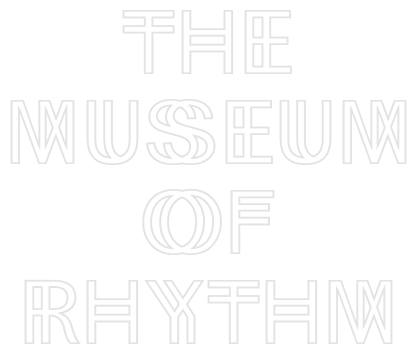“Are there not alternatives to memory and forgetting: periods where the past returns – and periods where the past effaces itself? Perhaps such an alternative would be the rhythm of history…”
– Henri Lefebvre1
The official accounts we accept as situated pasts have been composed at a certain pitch, tempo and frequency. When arranged as a linear progression, history comes to be “heard” as a brutal drone. Just as the striking of a tuning fork releases a swarm of collisions that are only received as a steady hum by the human ear, the construction of Modernity has involved a systemic muting of imprints that run alongside proclaimed universals. Even the vector of modern monstrosity has been made impenetrable—a medley of masks that can no longer reveal a face. The effects of this positivist temporality resonate as a false note unto which we are made shadow dancers. The articulations of parallel collisions as possible worlds, hence, call for new frameworks of transgression, whose shattering effect is akin to the breaking of a water horizon when the vibrating tuning fork permeates its skin.
Surrounded by political, cultural and civilizational collapses on a global scale, we are now faced with the sheer facticity that there is no stable ground upon which history can be sighted. Only a lingering identification with its memorized tempo endures. Within a seismic contemporaneity, the imaginative potential of telling time may no longer lie in minor dissections of petrified chronicles, but in reconsidering the entirety of its sensual complex—the rhythm of history.
The terrains of rhythm have historically maintained an ontological unfixity that allows anti-time forms to defy schemes of narrative regimentation. Rhythm is said to taxonomize time, yet its inherent capability extends to facilitate a shuttling across “times” as delays, repetitions, and overlays. Hence, the figurative demands of rhythm urge us towards inhabiting history rather than simply becoming transcribed subjects of it—as a Bakhtinian2 swallowing of “the world” in order to compel histories to speak from the gut, as an uncanny polyphony of “self-worlds”.
The complex lineage of “transgressions” in so-called primitive societies has amounted to the subversive overturning of modern consciousness and continues to be cast as a fundamental opposite to civilizational progress. To map the social texture of nonconformity from an inside of the present, we may turn to rhythmic dispositions and radical empathy between things of incommensurate worlds. We thereby also address silent thresholds between cultures of colonization and supposed states of aberration.
Museum of Rhythm sets forth a gestural itinerary, which includes the early life of metronomes, a dog whistle, a satellite image of “White Lines in The Gobi Desert”, Parisian street calls, the invention of a swimming stroke, Frank B. Gilbreth’s motion studies, an indigenous song tradition composed to radio static, Simone Forti dancing the news, a Laurel and Hardy classic set to a “nervous” throbbing3, Theosophist aura diagrams, Hanne Darboven’s encryptions of deep self-time, an aural archive that surveys the politics of listening, nineteenth century photographs of an indigo factory in colonial India, “Sonakinatography drawings” of Channa Horwitz, and much else, to build fictive bridges as well as vital frictions between aesthetic proposals, material histories and scientific documents.
As a potential knowledge field, rhythmanalysis has been referenced in philosophy, literature and the social sciences, yet remained marginal within investigations of historical time. Here, acts of rhythmological study are carried out within a museal frame to re-read volatile aspects of temporality – its abrasions, interstices, accidental coherences and reversals. Departing from the notion of historical museums as sites of accumulation, Museum of Rhythm is conceived as an architecture of transmissions where the viewer is an auratic device and the museum, an affective membrane. (Natasha Ginwala)
1. Lefebvre, Henri, Rhythmanalysis: Space, time and everyday life, Continuum, 2004
2. Bakhtin, Mikhail. Rabelais and His World, Indiana University Press, 2009.
3. A reference to Ken Jacobs’ Nervous Magic Lantern
